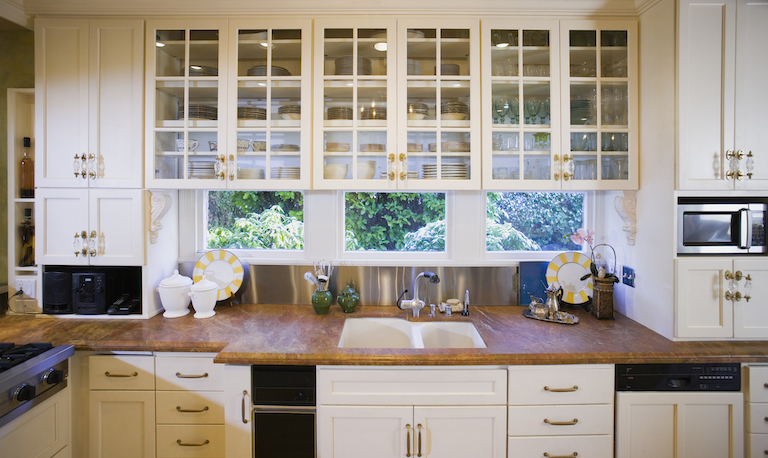
The cost of garage cabinetry and storage depends on the size, materials, labor, and more. Our guide will show you how much garage cabinets cost.
A darling of design enthusiasts, inset cabinets evoke a sense of craftsmanship


Inset cabinets have doors and drawers that are mounted inside the face frames.
They must be level and precisely aligned to work properly.
They typically cost between 15% and 30% more than overlay cabinets.
Inset cabinets have doors and drawers that fit inside the face frames. This means that, other than the hardware, the fronts of the cabinets are flush when closed. Homeowners like inset cabinets because they add a sense of old-world craftsmanship to a room. Keep reading to learn more about what inset cabinets are and whether they’re right for your home.

Unlike other types of cabinets, inset cabinets have doors and drawers that are mounted inside the face frame of the cabinet instead of on top of it. This configuration requires a high level of accuracy: Everything needs to be properly aligned and leveled, otherwise the cabinets will look sloppy and the doors and drawers won’t open and close properly.
Because the doors and doors rest inside the face frames, you can’t open them with your fingertips; you’ll need knobs or pulls or a push system. Hinges are often visible as well, although it is possible to use concealed hinges on inset cabinets.
Homeowners are drawn to inset cabinets for their high-end, tailored look and will often hire a local cabinet maker to custom-build them. Because they are built to more precise, exacting standards than full overlay cabinets (see below for more on this), inset cabinets tend to cost between 15% and 30% more. However, if standard cabinet sizes will work in your space, you can save money by purchasing pre-assembled inset cabinets or ready-to-assemble (RTA) ones that you put together yourself.
Both of these styles of cabinets can be used to create a smooth, uninterrupted look. So what’s the difference between inset vs. full overlay cabinets? Inset cabinets have doors and drawers that are mounted inside the face frames, while full overlay cabinets have doors and drawers that completely cover the front of the cabinet. Many full overlay cabinets are frameless, while inset cabinets are always framed. Because they differ in terms of box construction, they also utilize different hardware. Full overlay cabinets always have hidden hinges, while inset cabinets can have visible or hidden hinges.
Inset cabinets cost more than other popular cabinet styles such as full overlay cabinets, but they have a traditional, high-end look that works well with a wide variety of kitchen styles. Because the doors and drawers are flush with the face frames, they’re more protected from everyday wear and tear.
There’s little room for error when it comes to the alignment of inset cabinets: A crooked, warped, or sagging door or drawer could easily get stuck and not function properly. This means hardware might need more maintenance in order for everything to stay functional. And because there’s only a tiny gap between the edges of doors and drawers and the face frames, changes in temperature and humidity can also result in sticking by causing the wood to swell.
From average costs to expert advice, get all the answers you need to get your job done.

The cost of garage cabinetry and storage depends on the size, materials, labor, and more. Our guide will show you how much garage cabinets cost.

Discover custom cabinets cost for your home. Learn about average prices, installation factors, and ways to save on your custom cabinetry project.

Installing soft-close drawers is an affordable endeavor to improve the functionality of your cabinetry. Here’s how much soft-close drawers cost.

Ready to give your kitchen shelf life a boost? Learn how to build pantry shelving in this simple seven-step guide.

Installing cabinet doors is a simple DIY project that can enhance your living space. Learn how to install cabinet doors with this step-by-step guide.

Kitchen cabinets are fundamental elements of the space. Learn the eight different types of kitchen cabinets and how they create a kitchen’s design.